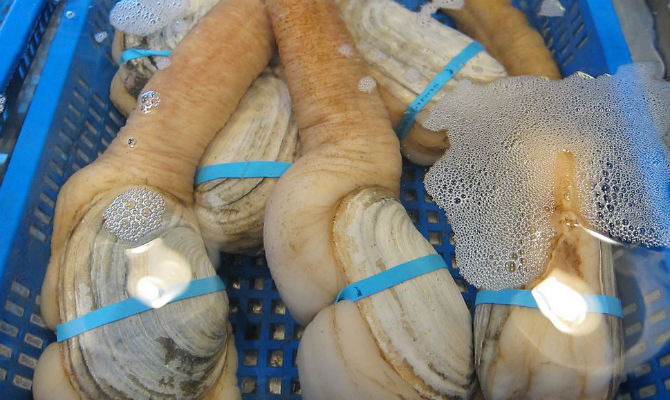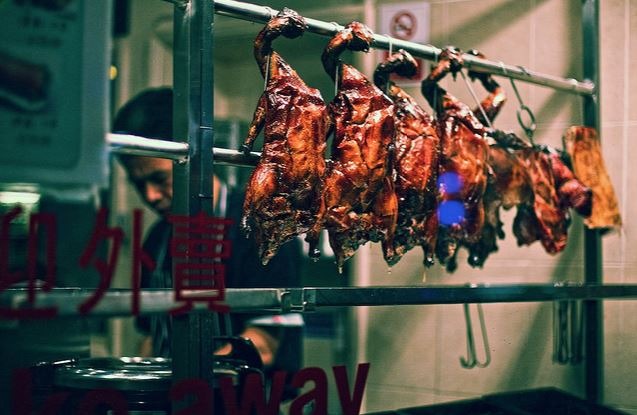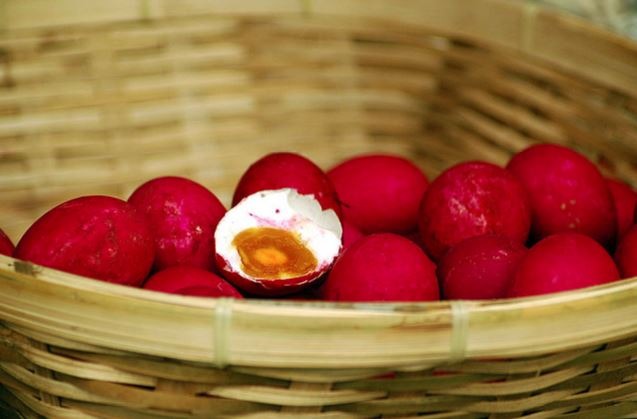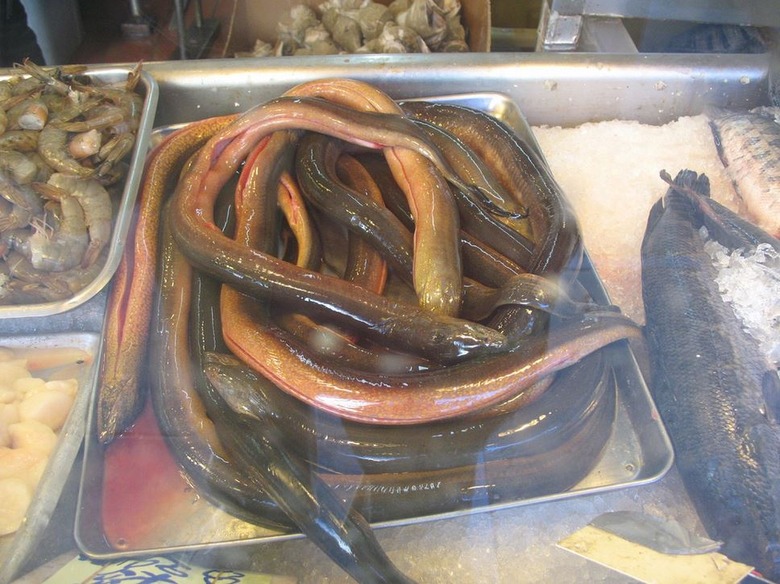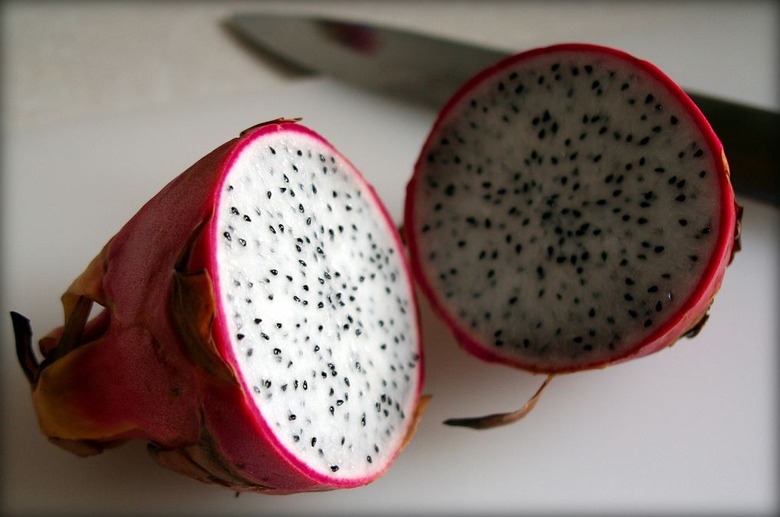The 5 Coolest-Looking Foods In Chinatown
It's hard to visit a Chinatown and not think that it's one of the coolest parts of the city. Teeming with vitality and a visceral quality that hits each of your senses, it's clear that there's no part of any major city that's quite like Chinatown. But if you really want a full Chinatown experience, you need to go hungry, because there's a lot to eat. Eating your way through Chinatown is a great way to spend an afternoon, especially if you go in with an open mind. There's no shortage of foods in Chinatown that are undoubtedly cool just to look at, but these five foods just might be the coolest Chinatown foods of all.
Peking Duck
This hallmark of Chinese cuisine is also one of the most iconic Chinatown foods, as it can usually be found hanging in the front windows of restaurants. To prepare it, air is pumped under the duck's skin, and then it's boiled for a short period of time to render some fat before it's hung up to dry. It's then glazed with malt sugar syrup and rested for 24 hours before being roasted until it turns shiny and brown.
Salted Eggs
There are a handful of egg preparations that you'll encounter in Chinatown that you've probably never come across before. The first is salted duck egg, which is made by preserving an egg in brine or damp salted charcoal. The resulting product has a briny smell, a gelatin-like and sharp-tasting white, and a firm, bright, and rich-tasting yolk; They're very salty and are generally used a condiment for rice porridge or as a flavoring for other dishes. The second egg you'll encounter is called a century egg (or hundred year egg, or thousand year egg), which is preserved in a mixture of clay, ash, salt, quicklime, or rice hulls for up to several months. These eggs have a dark green, creamy, and strongly-flavored yolk; and a salty, brown, translucent white. They can be eaten on their own, but they're definitely an acquired taste.
Geoduck
Geoduck (pronounced gooey-duck) is one of the funkiest-looking creatures on earth. A type of clam, these bivalves have a shell with a siphon that grows from it to a length of several feet. If you see a clam that looks like it's grown an elephant trunk, you've encountered a geoduck.
Live Eels
Eels are a popular component of Chinese and Japanese cuisine, and in Chinatown you can usually find them being sold alive, swimming in large troughs or buckets. Japan consumes more than 70 percent of the global eel catch, and they're typically fileted, skewered, and grilled.
Dragonfruit
Take a look at the fruit stand, and you're likely to see a bright magenta fruit you haven't encountered before, called dragonfruit or pitaya. Cut it open and you'll find that the flesh is white and studded with tiny black, crunchy seeds. The flavor is mildly sweet, similar to melon.
